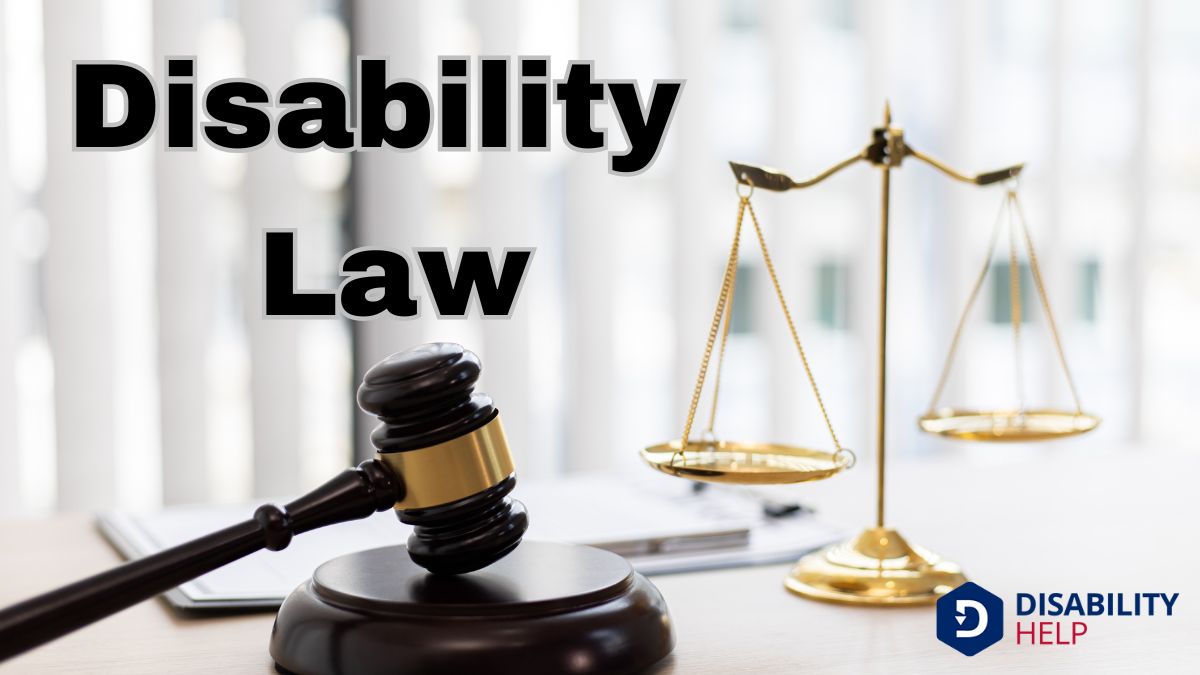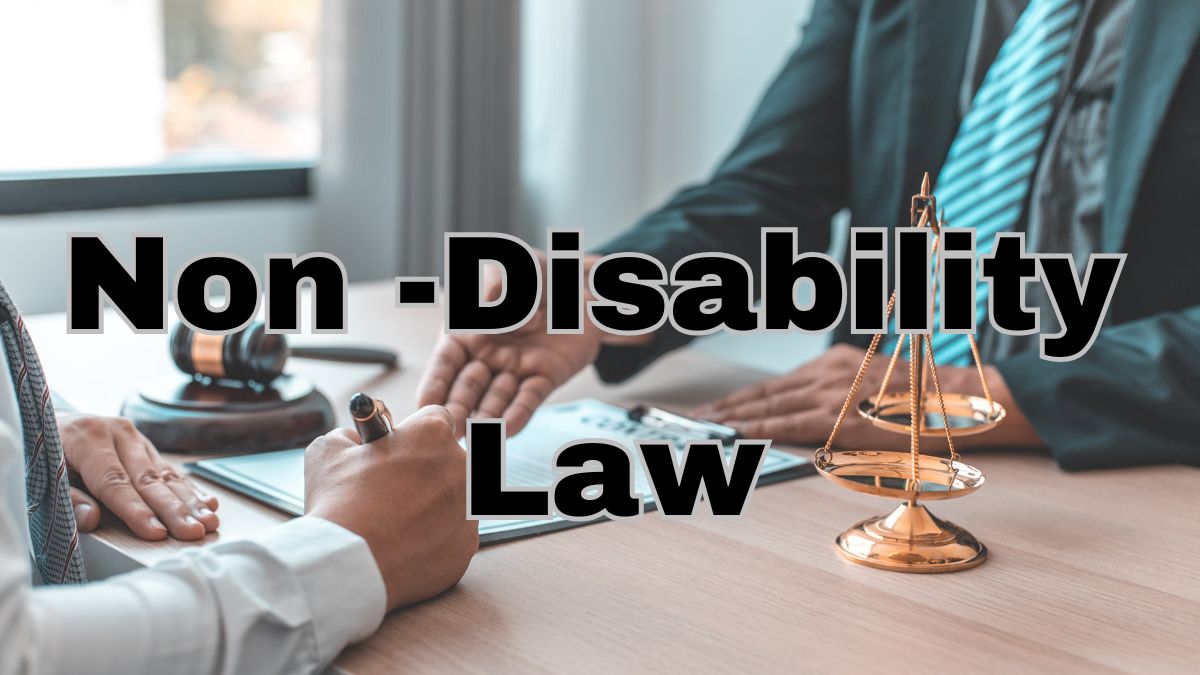When we're sorting through laws to identify those not specific to disability, it's essential to recognize which laws focus on disability rights. The ADA, Rehabilitation Act, IDEA, and Fair Housing Act are all centered around protecting those with disabilities. However, the Civil Rights Act of 1964 isn't a disability law—it addresses discrimination based on race, color, religion, sex, or national origin, not specifically disability. Recognizing this difference helps us understand the unique protections each law provides. If you're interested, there's more to uncover about how these laws operate within broader legal contexts.
Key Takeaways
- The Civil Rights Act of 1964 is not a disability law; it addresses discrimination based on race, color, religion, sex, or national origin.
- The Fair Labor Standards Act (FLSA) focuses on minimum wage, overtime pay, and child labor, not disability rights.
- The Family and Medical Leave Act (FMLA) provides leave for family and medical reasons but is not specific to disabilities.
- The ADA, Rehabilitation Act, IDEA, and Fair Housing Act are examples of disability laws.
- Understanding the differences helps identify laws that are not specifically focused on disability issues.
Understanding Disability Law Basics

Understanding the basics of disability law is fundamental for anyone maneuvering these legal protections. We need to grasp how these laws guarantee equal opportunities and prevent discrimination against individuals with disabilities. By doing so, we can better advocate for ourselves and others in various settings, including workplaces, schools, and public services.
First, let's recognize that disability laws primarily focus on ensuring accessibility and equality. They address issues like employment rights, reasonable adjustments, and access to public spaces. These laws require institutions and employers to create an inclusive environment where individuals with disabilities have the same opportunities to participate and thrive.
When we discuss disability law, it's pivotal to understand the importance of reasonable adjustments. These modifications allow individuals with disabilities to perform their jobs or access services effectively. Examples include altering work schedules, providing assistive technology, or guaranteeing physical accessibility in buildings.
We should also be aware that disability laws protect against discrimination. Whether it's in hiring processes or access to education, these laws prohibit unfair treatment based on disability status. By understanding these basic principles, we empower ourselves to navigate the legal landscape effectively and guarantee that rights are upheld for all.
Key Features of the ADA
Let's explore the key features of the Americans with Disabilities Act (ADA), a cornerstone law in disability rights. The ADA, enacted in 1990, secures that individuals with disabilities have the same rights and opportunities as everyone else. It covers various areas of life, aiming to remove barriers and promote inclusivity.
First, the ADA prohibits discrimination against individuals with disabilities in employment. Employers can't treat qualified individuals unfairly based on their disability, and they must provide reasonable accommodations when necessary. This creates a more equitable work environment for all.
Second, the ADA mandates accessibility in public services, such as transportation and government services. Public entities must make certain that their programs are accessible, allowing people with disabilities to fully participate in society.
Finally, the ADA requires public accommodations, like restaurants and hotels, to be accessible. This means making physical spaces easy to navigate and securing services are available to everyone.
- Equal employment opportunities: Empowerment through just treatment at work.
- Accessible public services: Inclusion in community life and activities.
- Barrier-free public accommodations: Freedom to navigate and enjoy public spaces.
Together, these features of the ADA help foster a society where everyone, regardless of ability, can thrive.
The Role of the IDEA
When we explore the role of the IDEA, we see its profound impact on the educational landscape for students with disabilities. It guarantees these students receive tailored support, helping them succeed in school alongside their peers. Let's look at how IDEA has transformed educational access and opportunities for countless children.
IDEA's Impact on Education
The Individuals with Disabilities Education Act (IDEA) has fundamentally reshaped our educational landscape by mandating that schools provide individualized support to students with disabilities. This legislation guarantees that every child, regardless of their challenges, has access to a free and appropriate public education. By requiring schools to develop Individualized Education Programs (IEPs), IDEA acknowledges each student's unique needs and strengths, ensuring they receive the support necessary to succeed.
IDEA's impact on education is profound and multifaceted. Through its implementation, we've witnessed significant changes, such as:
- Empowerment: Students with disabilities are given a voice and a customized learning path, fostering confidence and independence.
- Inclusion: The act promotes an inclusive environment where diverse learners can interact, learn from each other, and develop empathy.
- Advocacy: Families are equipped with the tools and knowledge to advocate for their children's rights, ensuring they receive the necessary resources.
Supporting Students With Disabilities
Building on the transformative impact of IDEA on education, we now focus on how this law supports students with disabilities in their everyday educational experiences. IDEA, or the Individuals with Disabilities Education Act, guarantees that students receive a free, appropriate public education tailored to their unique needs. It mandates the development of Individualized Education Programs (IEPs), which are essential for outlining specific educational goals and the services required to achieve them.
We recognize that IDEA doesn't just stop at creating IEPs. It also emphasizes inclusivity, making sure that students with disabilities learn alongside their peers in the least restrictive environment possible. This integration promotes social skills and a sense of belonging, which is vital for overall development.
Moreover, IDEA provides parents and guardians with a voice in their child's education. By involving them in IEP meetings and decisions, the law fosters a collaborative approach that benefits students. It's clear that such collaboration is fundamental for tailoring education to individual needs, ensuring no student falls through the cracks.
In essence, IDEA equips schools, families, and educators with the tools to create an inclusive and supportive learning environment, where every student has the opportunity to succeed.
Insights on the Rehabilitation Act
Traversing the landscape of disability rights, the Rehabilitation Act stands as a cornerstone in guaranteeing access and equality for individuals with disabilities. This pivotal piece of legislation, enacted in 1973, marked a significant shift in how society views and interacts with those who've disabilities. As we explore its depths, we see that the Act primarily aims to eliminate discrimination in programs receiving federal funding. Our understanding of this law reveals its profound impact on countless lives.
Reflecting on the Rehabilitation Act, let's consider its key components:
- Empowerment: It empowers individuals with disabilities by ensuring equal access to education and employment.
- Inclusion: It ensures that public institutions accommodate those with disabilities, fostering a more inclusive society.
- Change: It has driven societal change by challenging stereotypes and encouraging acceptance.
We can appreciate how the Act's provisions, particularly Section 504, have laid the groundwork for future disability rights legislation.
It's essential to recognize how it continues to influence policies today, guaranteeing that accessibility and equality aren't just ideals but realities.
Let's remain committed to understanding and advocating for these important rights.
Examining the Fair Housing Act
Let's investigate the Fair Housing Act, a crucial piece of legislation that safeguards against discrimination in the housing sector. Enacted in 1968, this act aims to protect individuals from unfair treatment when renting, buying, or securing financing for housing. The law prohibits discrimination based on race, color, national origin, religion, sex, familial status, and disability. By understanding its provisions, we can appreciate how it helps create equitable housing opportunities for everyone.
As we delve deeper, it's important to recognize the specific protections it offers to people with disabilities. The Fair Housing Act requires landlords and housing providers to make reasonable accommodations in rules, policies, practices, or services, ensuring accessibility for those with disabilities. For instance, if a tenant needs a service animal despite a no-pet policy, the landlord must consider this request.
Moreover, the Act mandates that newly constructed multifamily housing meets certain accessibility standards. This means buildings with four or more units must have accessible entrances and features, like wider doorways and reachable electrical outlets. By understanding these requirements, we can see how the Fair Housing Act works to eliminate barriers, helping those with disabilities secure the housing they need.
Identifying Non-Disability Laws

Let's explore key legislations that aren't focused on disabilities to better understand the broader legal landscape.
By distinguishing disability-specific acts from others, we can clarify which frameworks directly address disability rights.
This approach helps us grasp how various laws interact and contribute to our overall legal system.
Key Non-Disability Legislations
In our exploration of legal frameworks, it's critical to distinguish between disability laws and other key legislations that don't specifically address disability issues. Understanding these distinctions helps us navigate the legal landscape with more clarity and precision. Let's consider some significant non-disability laws that often intersect with various aspects of life but primarily focus on other areas.
- Civil Rights Act of 1964: This landmark law prohibits discrimination based on race, color, religion, sex, or national origin. It's a cornerstone in the fight for equality, shaping workplace and societal norms.
- Fair Labor Standards Act (FLSA): This act sets minimum wage, overtime pay, and child labor standards. While it impacts all employees, it doesn't specifically address disability concerns.
- Family and Medical Leave Act (FMLA): Allowing employees to take unpaid, job-protected leave for family and medical reasons, the FMLA provides a safety net, yet it's not designed to address disability-specific needs directly.
Distinguishing Disability-Specific Acts
As we examine the landscape of legal protections, recognizing the difference between disability-specific acts and other significant laws becomes clear. These distinctions are pivotal for understanding which laws directly address the needs and rights of individuals with disabilities. While laws like the Americans with Disabilities Act (ADA) are explicitly designed to protect the rights of people with disabilities, other laws might've broader scopes that don't focus specifically on disability rights.
Let's consider the Family and Medical Leave Act (FMLA). It provides leave for medical reasons but isn't exclusively a disability law. Understanding this can help us identify which laws offer specific protections to people with disabilities and which do not.
Similarly, laws like the Civil Rights Act focus on broader anti-discrimination protections, covering race, color, religion, sex, and national origin, rather than being disability-specific.
Important Legal Frameworks Overview
Trekking through the vast legal terrain, we encounter numerous frameworks that, while impactful, don't specifically target disability rights. These laws play significant roles in shaping society, yet their primary focus lies elsewhere. Understanding this distinction is key to navigating which laws truly protect disability rights and which contribute to the broader legal tapestry.
Consider the Civil Rights Act of 1964. This landmark legislation transformed the fight against discrimination, yet its language and provisions primarily address race, color, religion, sex, or national origin, not disability.
Similarly, the Fair Labor Standards Act (FLSA) reshaped labor laws by setting standards for minimum wage and overtime pay. However, its focus remains on fair labor practices and workers' rights rather than disability accommodations.
These laws evoke the following emotional truths about our collective journey:
- Resilience: The constant push to expand the scope of justice.
- Hope: The belief that inclusive laws can emerge from broader frameworks.
- Determination: The drive to guarantee every individual's rights are recognized.
Conclusion
In exploring disability law, we've covered some key legislation: the ADA, IDEA, and the Rehabilitation Act, each playing significant roles in protecting rights. We've also examined the Fair Housing Act, which, while related, isn't exclusively a disability law. It's essential to identify these distinctions to better advocate for inclusivity. Let's continue to educate ourselves and others, ensuring everyone's rights are upheld. Together, we can make a difference in creating an equitable society for all.
The post Which of the Following Is Not a Disability Law? appeared first on Resources on Disability Assistance: Your Rights and Benefits.
source https://www.disabilityhelp.org/which-of-the-following-is-not-a-disability-law/
No comments:
Post a Comment